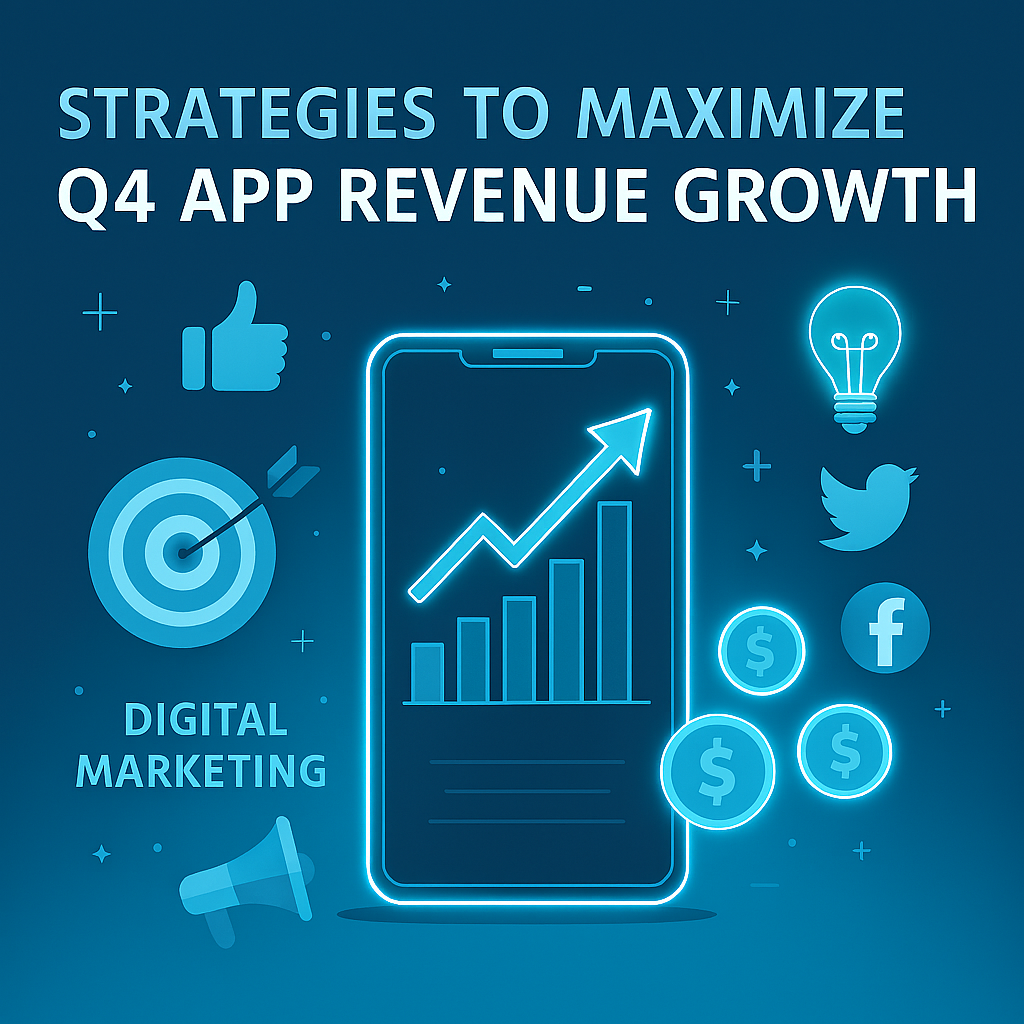What is app promotion?
App promotion, a.k.a. app marketing or mobile advertising, refers to all marketing activities aimed at increasing the reach of mobile apps. Now more than ever, we are surrounded by mobile apps, having to choose our small set of apps that we use more frequently, amongst millions available. Thus, app promotion is essential for advertisers who want to have their app in as many smartphones as possible.
App developers are relying more and more on app promotion, allocating budgets on user acquisition, TV advertising, app store optimization, influencers and so on. However, with a global economic downturn in sight, it is becoming increasingly imperative to make something out of this huge spend. In other words, advertisers want to make app promotion profitable.
Given that it’s not an easy feat to achieve, in this article we’ll suggest a series of strategies to put in place in order to promote your apps profitably. We’ll deep dive into these 5 user acquisition tactics:
- Combine different UA channels
- Define your app promotion KPIs
- Lower your CPI
- Maximize your app promotion ROI
- Optimize creatives to promote your app
How to promote your app
Before breaking down the strategies above, it’s worth remembering that app promotion does not consist exclusively of user acquisition. As mentioned in our introduction, there are many different ways to promote your app. For instance, TV advertising can prove to be very effective in raising brand awareness and increasing the visibility of your product. Even though it may become very expensive, it really helps to get the app in consumers’ minds.
Then, social media and influencers have become a solid user acquisition channel. Social media platforms allow advertisers to promote their apps to a wide reach of potential users, together with highly sophisticated targeting capabilities. On the other hand, influencers bring in their loyal followers, who can be easily categorized into user segments and then targeted across other app promotion channels.
A third strategy for an effective app promotion is app store optimization, frequently abbreviated as ASO. App store optimization works similarly to search engine optimization (SEO), but its goal is to improve apps’ ranking in the app store results rather than in web searches.
Filling the app’s description with relevant keywords, optimizing icons and receiving positive reviews are all essential steps in order to improve your app’s ranking in the App Store, or Google Play Store. Needless to say, the higher the ranking in the store the more organic installs are likely to be generated by users.
All of the three channels highlighted so far can be combined in your marketing mix to promote your app. However, user acquisition through app install campaigns may prove necessary in order to unlock the full potential of your app’s scalability. If you’re wondering then how much will it cost to ramp up a proper user acquisition strategy, here comes our article with 5 tips to make app promotion profitable.

How to make app promotion profitable
User acquisition activities are the means through which you scale your app installs and generate in-app revenues. While one year ago the main focus was to boost app installs and acquire as many new users as possible, 2023 is testing advertisers with a new different challenge: to make app promotion profitable.
Here we list 5 different strategies that can help app developers to achieve this goal.
Combine different UA channels to promote your app
First of all, there are many available user acquisition channels which you can employ to run app install campaigns. Affiliate networks represent a cost-efficient solution, working on a performance basis and allowing advertisers to pay only for installs or in-app events. The risk-averse pricing model comes at the cost of transparency though, since there is no indication on where the ads are shown or where traffic has been bought to promote your app.
Secondly, social media platforms like Google, Facebook and Tiktok provide app developers with their own self-serve platforms, which advertisers’ teams need to use in order to run app install campaigns. Despite sophisticated targeting options and a wide reach, dynamic prices on a cost-per-click basis make it difficult to predict costs and this may be a limiting factor for your app promotion.
Finally, programmatic platforms such as mobile DSPs grant access to premium ad exchanges, where advertisers can buy top-quality ad placements. Most DSPs work with CPI and CPA pricing models, and leverage A.I. and machine learning algorithms to optimize the media buying process. Platforms which buy programmatic traffic rely on sophisticated technology which allows them to target users at the zip code level, to whitelist and blacklist ISPs, operating systems and even mobile apps where to show or not show ads.
Define your app promotion KPIs
The second suggestion in our list is related to the early stage of your app promotion strategy. The key to profitability is to define early on your KPIs, aligning them with your overall business goals and app monetization strategy. For example, retail apps’ advertisers may set in-app purchases or CPA as their major KPIs when promoting apps. On the other hand, mobile game developers may focus on retention rate and/or ROAS.
You can read here about the most common app promotion KPIs and how to pursue them https://mapendo.co/blog/user-acquisition-kpis
Once clear app promotion KPIs have been defined, user acquisition partners can launch app install campaigns and start collecting data through their platforms. A proper advertising budget allows app marketers to collect enough data to optimize campaigns faster towards the desired KPI. Mobile DSPs usually leverage machine learning algorithms to optimize the media buying process and scale the volumes of new users acquired.
By optimizing app promotion campaigns towards business KPIs as soon as possible, app developers are sure to make a profit from their advertising spend. Otherwise, there is still the risk of paying money for users who may not become actual customers and generate in-app revenue.

Lower your CPI
Early on in our article we’ve mentioned CPI as a pricing model for user acquisition campaigns. Cost per install is indeed the most common model to promote your app, and it can be either fixed or dynamic. It is usually computed as follows:
CPI = total ad spend / new users acquired
CPI rates usually depend on country, platform and even creatives, since different ad formats have different costs when buying ad placements within RTB exchanges.
While country and platform are mostly out of control for UA companies, creatives represent a dimension they can work on in order to decrease CPI for advertisers. As well as multiple other factors analyzed when running app install campaigns. Operating system, internet service provider, device model, but also device language and users’ age are all contextual signals useful for optimization purposes.
Furthermore, ad networks and mobile DSPs can often lower CPIs by optimizing their bidding strategy, blacklisting or whitelisting specific apps or entire app categories from their ad inventory. Such decisions are made through ML algorithms’ analyses and also based on experience in advertising specific apps categories like mobile games. The lower the CPI the higher the ROI, which makes app promotion profitable. But there’s more to come.
Maximize your app promotion ROI
Lowering the CPI is not the only way to maximize your ROI and promote your app profitably. Indeed, advertisers can focus on the other end of the spectrum, which is in-app revenues.
The most obvious solution is to work with CPA model, paying UA partners only for in-app events which generate revenue. However, it is not always the easiest way to maximize ROI. CPA campaigns usually take more time to scale volumes since there is less data to optimize traffic acquisition compared to CPI campaigns.
Instead, advertisers can still run CPI campaigns, providing app marketers with enough budget to collect a significant amount of data. But, they can optimize such campaigns towards their desired KPIs, such as retention rate, ROI, registration rate and so on.
Such optimization depends heavily on the app monetization strategy. Since apps have different ways to monetize, they may have entirely different KPIs. For example, non gaming apps often have a deep user funnel, where the monetization takes place only after multiple previous in-app events. So, there may be KPIs related to early stages of the funnel such as account creation or registration.
On the other hand, mobile games have a short users’ lifespan, which means they look to generate revenues from users as soon as possible, with a closer user funnel. Mobile games monetize either through ads or in-app purchases (IAPs), and the ROI generated by those two channels is a very common KPI used to measure app promotion performance.

Optimize your creatives to promote your app
Last but not least, ad creatives. We’ve already mentioned their role in decreasing CPIs for app promotion. However, creatives play a crucial role also in revenue generation.
Please keep in mind that there are several ad formats you can choose and rotate when promoting your app. Banners are the most common, but there are also videos, playable ads, interstitials, natives, rewarded ads and so on. As stated above, all these formats have different costs in ad exchanges, but they also lead to different results in terms of users’ quality.
Let’s look at mobile games to understand that. Mobile games are the most popular app category and also the biggest in terms of ad spend. User acquisition companies who deal with app promotion for mobile games tend to test and rotate multiple creative formats, working to assess the top performing ones. While banners guarantee a cheap price, videos and playable ads are the ones responsible for the biggest delivery, not only in terms of installs.
Videos and playable ads, besides having high CTRs, usually drive app installs from high-quality users, who generate in-app revenue, through ads or IAPs. Ultimately, those high-quality users, who prove to have high LTV, help to maximize ROI and, as a result, profitability. That’s why app promotion for mobile games heavily relies on creating effective video and playable ads, with a catchy call to action and engaging content.





















